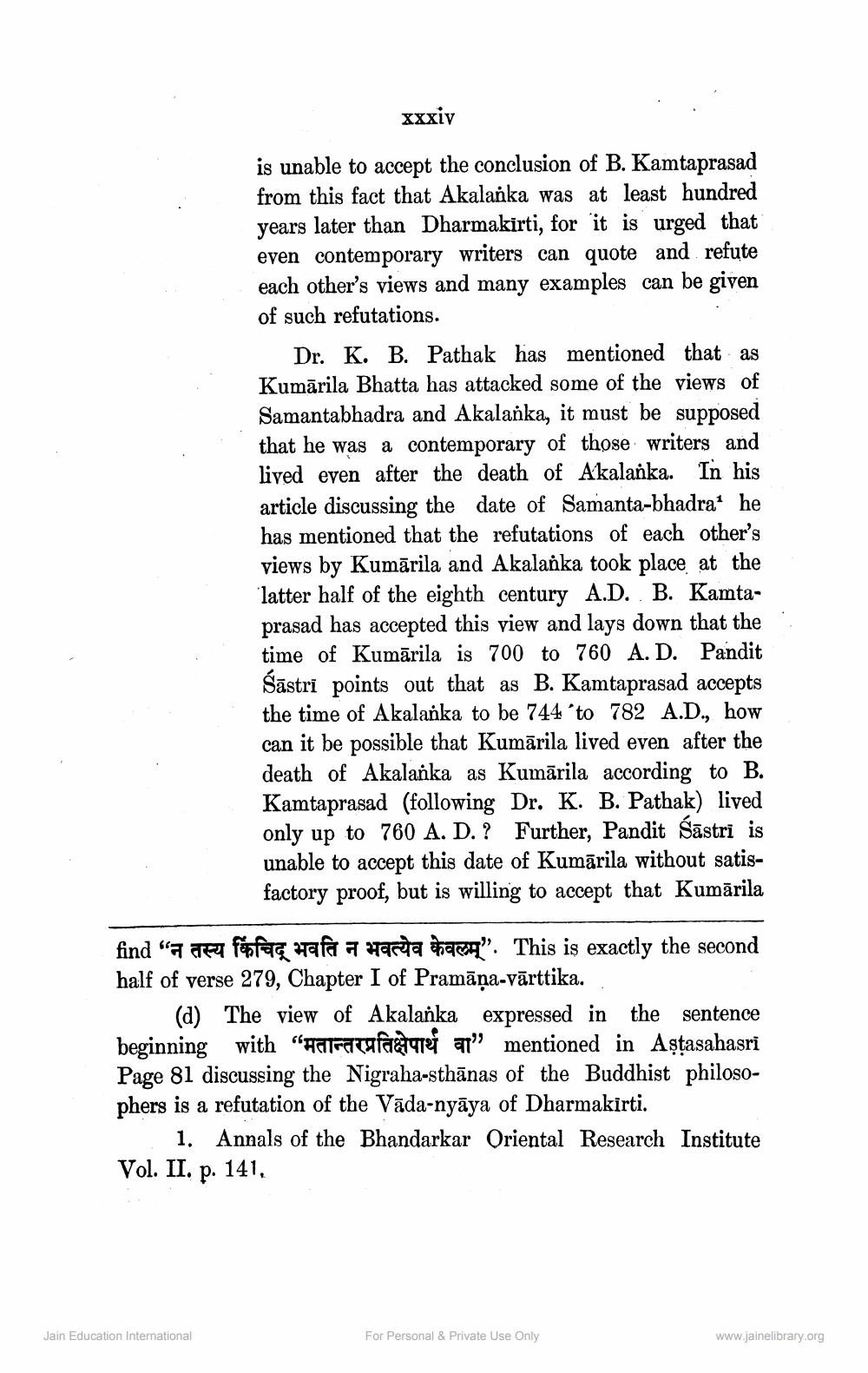________________
xxxiv
is unable to accept the conclusion of B. Kamtaprasad from this fact that Akalanka was at least hundred years later than Dharmakirti, for it is urged that even contemporary writers can quote and refute each other's views and many examples can be given of such refutations.
Dr. K. B. Pathak has mentioned that as Kumārila Bhatta has attacked some of the views of Samantabhadra and Akalanka, it must be supposed that he was a contemporary of those writers and lived even after the death of Akalanka. In his article discussing the date of Samanta-bhadra” he has mentioned that the refutations of each other's views by Kumārila and Akalanka took place at the latter half of the eighth century A.D. B. Kamtaprasad has accepted this view and lays down that the time of Kumārila is 700 to 760 A. D. Pandit Šāstri points out that as B. Kamtaprasad accepts the time of Akalanka to be 744 'to 782 A.D., how can it be possible that Kumārila lived even after the death of Akalanka as Kumārila according to B. Kamtaprasad (following Dr. K. B. Pathak) lived only up to 760 A. D.? Further, Pandit Šāstri is unable to accept this date of Kumārila without satisfactory proof, but is willing to accept that Kumārila
find "न तस्य किंचिद् भवति न भवत्येव केवलम्". This is exactly the second half of verse 279, Chapter I of Pramāņa-vārttika.
(d) The view of Akalanka expressed in the sentence beginning with "atracafetaret 91" mentioned in Aştasahasri Page 81 discussing the Nigraha-sthānas of the Buddhist philosophers is a refutation of the Vāda-nyāya of Dharmakirti.
1. Annals of the Bhandarkar Oriental Research Institute Vol. II. p. 141.
Jain Education International
For Personal & Private Use Only
www.jainelibrary.org




